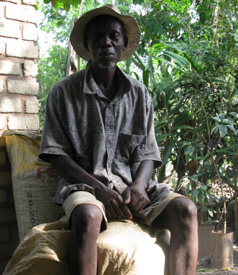 Well, this is unexpected.
Recent research shows a compound in okra
“promotes selective antitumor effects in human breast cancer cells and may represent a potential therapeutic to combat human breast cancer.”
Well, this is unexpected.
Recent research shows a compound in okra
“promotes selective antitumor effects in human breast cancer cells and may represent a potential therapeutic to combat human breast cancer.”
Here’s the abstract, Biotechnol Lett. 2014 Mar;36(3):461-9. doi: 10.1007/s10529-013-1382-4. Epub 2013 Oct 16. Lectin of Abelmoschus esculentus (okra) promotes selective antitumor effects in human breast cancer cells.
The anti-tumor effects of a newly-discovered lectin, isolated from okra, Abelmoschus esculentus (AEL), were investigated in human breast cancer (MCF7) and skin fibroblast (CCD-1059 sk) cells. AEL induced significant cell growth inhibition (63 %) in MCF7 cells. The expression of pro-apoptotic caspase-3, caspase-9, and p21 genes was increased in MCF7 cells treated with AEL, compared to those treated with controls. In addition, AEL treatment increased the Bax/Bcl-2 ratio in MCF7 cells. Flow cytometry also indicated that cell death (72 %) predominantly occurred through apoptosis. Thus, AEL in its native form promotes selective antitumor effects in human breast cancer cells and may represent a potential therapeutic to combat human breast cancer.
Don’t get your hopes up about that 72% figure: that seems to be that when cancer cell death occurred, 72% of it was related, not that 72% of cancer cells were killed. The 63% cancer cell growth inhibition does seem promising, though.
There are even hints in another paper that okra may be related to lower rates of prostate cancer: Continue reading








